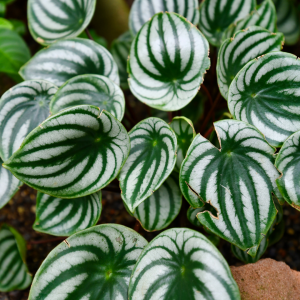Master Gardener: Peperomia is top 2022 houseplant

In a not so unsurprising move, the National Garden Bureau (NGB) has added a new category, houseplants, to its “Year of the” series and has honored peperomia as its first selection.
Founded in 1920, NGB is the not-for-profit marketing arm of the gardening industry whose goal is to educate, inspire, and motivate people to increase the use of plants in homes, gardens, and workplaces.
Each year, NGB’s horticultural experts choose one annual, one perennial, one bulb crop, one edible, and one shrub as the “Year of the” crops. These are selected for their popularity, ease in growing, genetic diversity, and versatility.
NGB selected these for the Year of 2022 plants: verbena (annual), phlox (perennial), gladiolus (bulb), salad greens (edible), and lilac (shrub).
There is a growing popularity of houseplants especially with new gardeners who appreciate the decorative addition to their homes and the natural ability to purify the air. Indoor gardeners want plants that bloom or have foliage in a variety of shades and textures.
Peperomia, which is easy to grow with showy foliage, offers a wide variety of plants, some of which can be succulents. There are selections for either low or high light requirements. Another feature is they are relatively pest- and insect-free.
They can be grown in a decorative pot or in a terrarium. The plants grow between 12-18 inches tall and do not like soggy wet soil.

NGB says, “For decades, there were only a handful of peperomia varieties to choose from, but with their new popularity and ease of growth, many additional varieties have come to market. The many types of peperomia can range from bushy to trailing, upright, or cascading, and from fleshy succulent plants to those less so.”
“Peperomia are a diverse group of plants in the pepper family, Piperaceae, but not the edible pepper family that gives us green and hot peppers,” the NGB continues. “The peperomia come from the pepper family that provides us the pepper spice that gives our food flavor. It would seem then that peperomia might be edible, but they are not for human or pet consumption.”
Pet owners would be advised to keep the plants out of reach.
This is a good time to visit your garden center to see the different varieties of peperomia. Because none of the peperomia get overly large, they are a nice choice for small spaces.
NGB describes the following varieties:
• The succulent species P. obtusifolia is easy to grow as it is not the high light lover that most succulents are. It thrives in a medium light and is forgiving of drying out because of its succulence. Its adaptability makes this peperomia a winner all around and it comes in a variegated form as well.
• Peperomia argyreia is also called the watermelon peperomia as its leaves resemble a watermelon’s rind.
• Peperomia caperata or commonly called emerald ripple is also a popular form with its deeply quilted, crinkly leaves.
• P. incana is a silver-leaved, fuzzy peperomia form that does prefer more sun and tolerates drying out more than the others.
• Peperomia polybotrya or raindrop peperomia is often mixed up with the more well-known Pilea peperomioides (friendship plant). It is more succulent, more tolerant of drying out, and does not have perfectly round leaves as the pilea has.
• Two trailing forms are P. puteolata or parallel peperomia and P. pereskiifolia. Both are easy to grow and make lovely hanging baskets.
• A resemblance to miniature turtle shells makes the string of turtles or prostrata popular and it is easy to find.
Special presentation on chimney swift birds
The public is invited to a special presentation by Helen Hollis on Wednesday, March 23, 2022. She will be speaking on the declining chimney swift birds and how we can help build their population. This special presentation will be held in the large conference room at the Sandusky County extension building located at 2000 Countryside Dr. from 6-8 pm. For more information call Sue at the extension office at 419-334-6340 and leave a message.
Seed swap slated for Feb. 26
Mark your calendar for the Toledo Grows Seed Swap on Feb. 26 at Scott High School, 2400 Collingwood Ave., Toledo, from noon till 3p.m. Admission is free. You will receive 10 free tickets for obtaining packages of seeds. You can buy extra tickets for only 50 cents or bring your own seeds to swap (must be dated 2022) and labeled in individual envelopes or packets.
No bulk seeds. There are children’s activities, gardening displays, and lots of gardening information available. Masks are required for anyone over the age of 5.
Christine Michael is a member of the Sandusky/Ottawa Master Gardeners.
This article originally appeared on Fremont News-Messenger: Peperomia has been chosen as the top 2022 house plant

